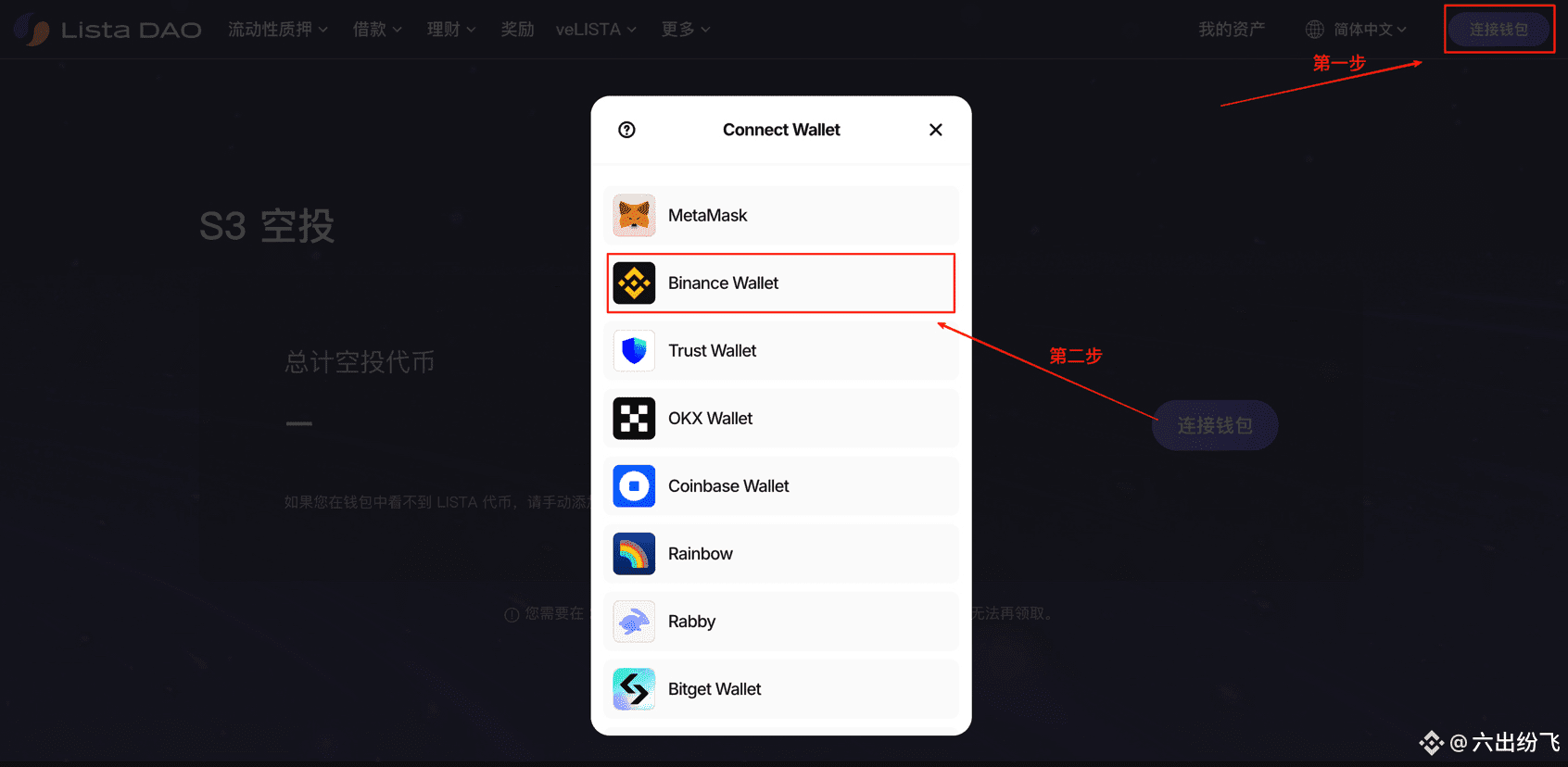Success! 4980 Lista airdrop received, worth 1350 USD! Claim deadline is August 23rd, quick reference for the beginner's tutorial!
I can't count how many airdrops this is for Lista, this round of S3 Q3 airdrop event is even more generous than the previous two! The deadline for claims is on August 23rd, so check out the claiming tutorial below if you haven't claimed yet! Brother Liu directly received 4980 Lista, worth 1350 USD!
Attention, airdrop hunters! The claim for the airdrop is ending on August 23rd, make sure to check if you have any airdrop, or else it would be a waste!
1. Go to Lista's official website, lista.org/airdrop
2. Top right corner link to wallet
4980 Lista was beyond my expectations; I thought two or three thousand would be enough. In terms of airdrops, Lista is indeed generous!
Now let me introduce Lista to everyone, which has burned 20% of its tokens, a long-term positive!
Looking for a 'steady progress' new entry? The on-chain liquidity of USD1 has already gained momentum, and Lista DAO maximizes the efficiency of stablecoins and collateral assets: one end receives USD1 issued by World Liberty Financial, while the other directs liquidity towards lending, market-making, and liquidation networks, allowing for faster capital turnover and more controllable slippage and waiting times. For players seeking replicable cash flow, this just fills the gap of 'steady infrastructure + scalable'.
In the USD1 ecosystem (the signal for the TVL exceeding 100M has been reached), Lista DAO's strategic position resembles a 'liquidity distributor': Firstly, standardizing multi-source collateral (such as quality LST/stablecoin positions) to reduce the friction of issuance and redemption; Secondly, quickly routing and market-making modules to bring USD1 into mainstream scenarios (lending, perpetual margin, liquidation fund pools), enhancing the reusability of unit liquidity; Thirdly, cross-chain and multi-protocol collaboration allows funds to be completed 'from minting to use' within the same closed loop, reducing transit risks and costs. The core of this design is to engineer stability and efficiency simultaneously: setting risk control thresholds for upstream (collateral) and providing predictable depth and fees for downstream (usage scenarios).
At the token level, LISTA announced a 20% (200M) burn, which long-term equates to compressing the value density brought by network growth 'back to existing holders'. The significance of the burn is not only in nominal deflation but also in binding protocol income, ecological incentives, and governance weight together: when TVL and usage counts rise, fees and incentives flow back to ensure security and research and development, governance then reallocates resources to 'truly needed' scenarios, avoiding empty narratives. Only when the deflation curve overlays real usage can verifiable value capture occur.
In the path where TVL exceeds 3 Billion, Lista DAO's competitiveness is reflected in three points: First, the risk framework and collateral pool structure are more 'anti-fragile' (traceable decentralization, discounts, and liquidation thresholds); Second, the supply and scheduling of cross-domain liquidity have become 'infrastructure', reducing the awkwardness of market-making and liquidation networks where 'the last step lacks depth'; Third, low thresholds for development and ecological collaboration—standardized interfaces, clear incentives and liquidation paths, reducing integration and maintenance costs. Looking ahead to the upward phase, four hard indicators can be monitored: USD1 minting/redemption delay and failure rate, the depth and turnover rate of the main protocol's USD1, LISTA burn/buyback progress and fee ratio, governance participation and proposal approval efficiency—when these curves improve simultaneously, the dual wheels of 'stable ticket interest + extensible application' can be truly realized.


